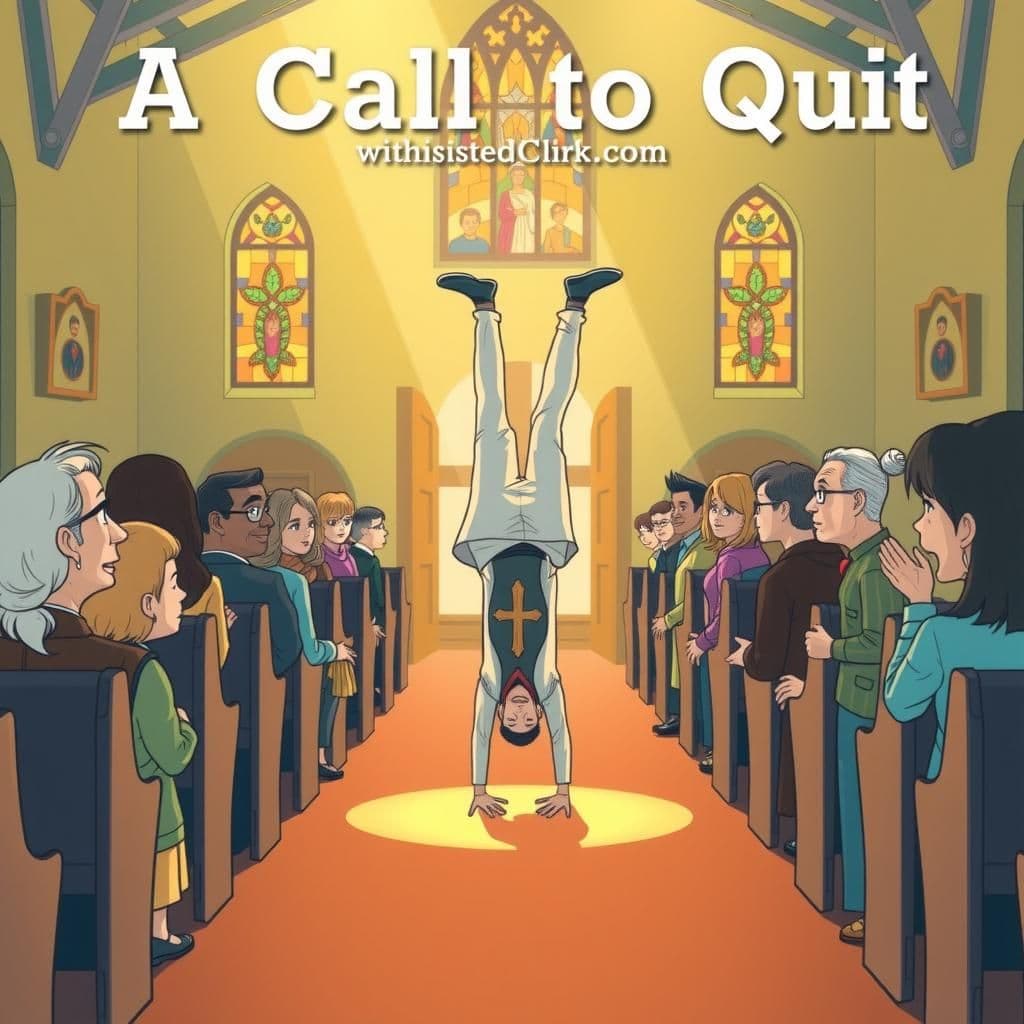A Call to Quit

Story Summary
In "A Call to Quit," a minister, facing dwindling attendance, performs an eye-catching handstand during his sermon, hoping to revitalize interest in his church. However, his unconventional approach leads to his dismissal in favor of a circus performer, reflecting a shift towards modern theological trends. This short tale serves as an impactful moral story about the challenges of adapting to change and the often unexpected consequences of seeking attention in educational moral stories.
Click to reveal the moral of the story
The story highlights that unconventional methods may attract attention, but true engagement and respect from a community are built on substance rather than spectacle.
Historical Context
This story reflects the late 19th to early 20th-century cultural shift in America, where traditional religious practices began to clash with emerging modernist ideas and entertainment influences. It draws on the trend of incorporating sensationalism and spectacle into religious gatherings, reminiscent of vaudeville performances and circus acts, as well as the broader societal challenge to established religious authority, often seen in various retellings of the "circus preacher" trope that emerged during this period.
Our Editors Opinion
This story illustrates the dangers of seeking attention through gimmicks rather than substance, a lesson that resonates in today's world of social media and constant content creation. For example, a company might launch a flashy advertising campaign to grab attention, only to find that consumers quickly lose interest when the product itself lacks quality or value, highlighting the importance of genuine engagement over mere spectacle.
You May Also Like

The Dogs House
In "The Dog's House," a Dog begins by wanting to build a small house to shelter himself from the winter cold. However, when summer arrives and he feels larger and more comfortable, he dismisses the idea of building a proper house, highlighting a captivating moral about the importance of adaptability and perspective. This quick moral story offers valuable lessons for kids about understanding one's needs in different seasons of life.

Two Footpads
In the simple short story "Two Footpads," two criminals share their misadventures while boasting about their robberies at a roadside resort. The First Footpad proudly claims to have robbed the Chief of Police, while the Second Footpad reveals a twist in his tale, admitting that he lost some of his own stolen loot when he attempted to rob the United States District Attorney. This quick read serves as a moral lesson about the unforeseen consequences of crime, reminding readers of the folly in boasting about such exploits.

Two Dogs
In "Two Dogs," a dog, after suffering under human control, seeks a wagging tail from the Creator to express affection and gain acceptance, embodying a simple lesson from stories about resilience and love. Observing this transformation, a later-created Politician requests a similar gift, receiving a wagging chin which he uses for personal gain, demonstrating a moral about the differences in intentions behind gestures. This folklore offers valuable insights for kids, making it a fitting choice among moral stories for class 7 and short bedtime stories with moral teachings.
Other names for this story
"Faith and Folly", "The Minister's Last Act", "A Pulpit in Peril", "Sermon on the Edge", "The Final Call", "Church of the Unexpected", "The Last Sermon", "A Bold Exit"
Did You Know?
This story humorously highlights the struggle between traditional religious practices and the need for modern engagement, illustrating that even drastic measures to attract attention may not be enough to prevent change when the audience's interests have shifted.
Subscribe to Daily Stories
Get a new moral story in your inbox every day.